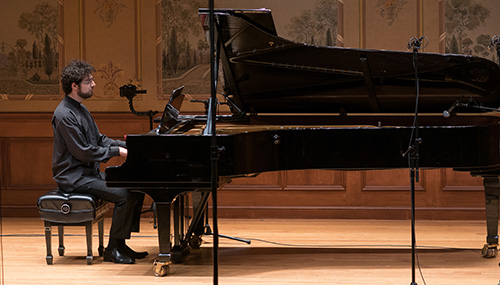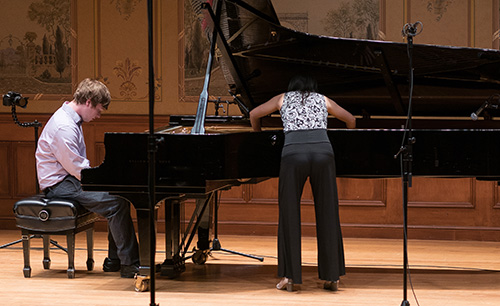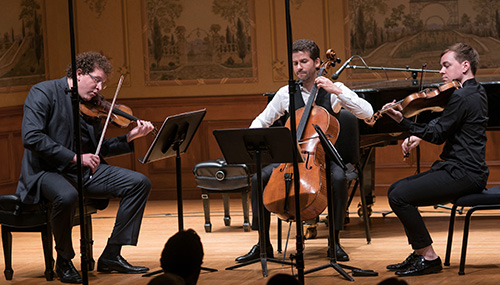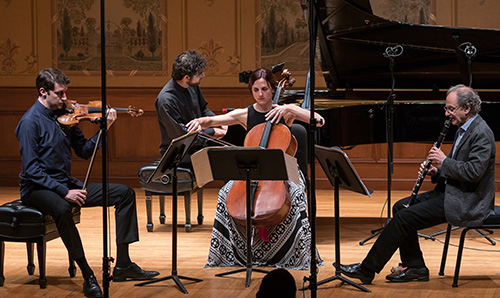by Timothy Robson

Pianist Roman Rabinovich opened with the ubiquitous Prelude and Fugue in C from Bach’s The Well-Tempered Clavier, Book 1. Surely most piano students have played at least the prelude (or heard Charles Gounod’s arrangement with an “Ave Maria” countermelody above it). Eschewing the damper pedal, and playing with clear articulation, Rabinovich clarified Bach’s harmonic underpinnings by slightly stressing and lengthening bass notes. He deftly wove the fugue’s upward scale subject into the contrapuntal texture. Even well-known music can sound new under masterful fingers.

The four short movements of Franz Schubert’s Trio for Violin, Viola and Cello in B-flat, D.581 are not among Schubert’s most profound musical utterances, but on a warm summer evening they created a melodious divertissement. Violinist Noah Geller, violist Matthew Lipman, and cellist Nicholas Canellakis showed alert communication and tight ensemble throughout. Lipman’s long viola solo in the third movement Menuetto: Allegretto was particularly fine, and the closing Rondo was enjoyably lively.

The quartet was premiered on January 15, 1941 at Stalag VIIIA in Görlitz, Silesia (now part of Poland) by the composer as pianist and three other inmates. As this performance progressed through the work’s eight movements, the listener was constantly reminded of the miracles that aided the work’s composition, rehearsal, and first performance. The quartet is a supreme landmark of twentieth-century chamber music.
Each movement has an individual character: harshly dissonant chords contrast with long, sustained melodies played against shimmering piano chords. The third movement, “Abyss of the Birds” for solo clarinet, features quick, ornamental phrases simulating birdsongs and long notes held for what seemed like an eternity, with controlled massive crescendo and diminuendo. It requires the utmost skill of the player, and Franklin Cohen was not only brilliant technically, he caught every bit of the music’s despair.

The final movement, “Praise to the Immortality of Jesus,” resembles the fifth, but here the solo is for violin. Extremely slow, its harmonies and melody are always ascending. Bendix-Balgley and Rabinovich found profound clarity at the end, where the violin plays a long note with a diminuendo that seems to stretch into eternity. The audience was spellbound after the movement ended, and hesitated before applauding. This performance will be remembered for its outstanding level of musicianship, but perhaps more so for its strong communication of Messiaen’s religious and philosophical views.
Photos by Gary Adams.
Published on ClevelandClassical.com July 3, 2018.
Click here for a printable copy of this article



